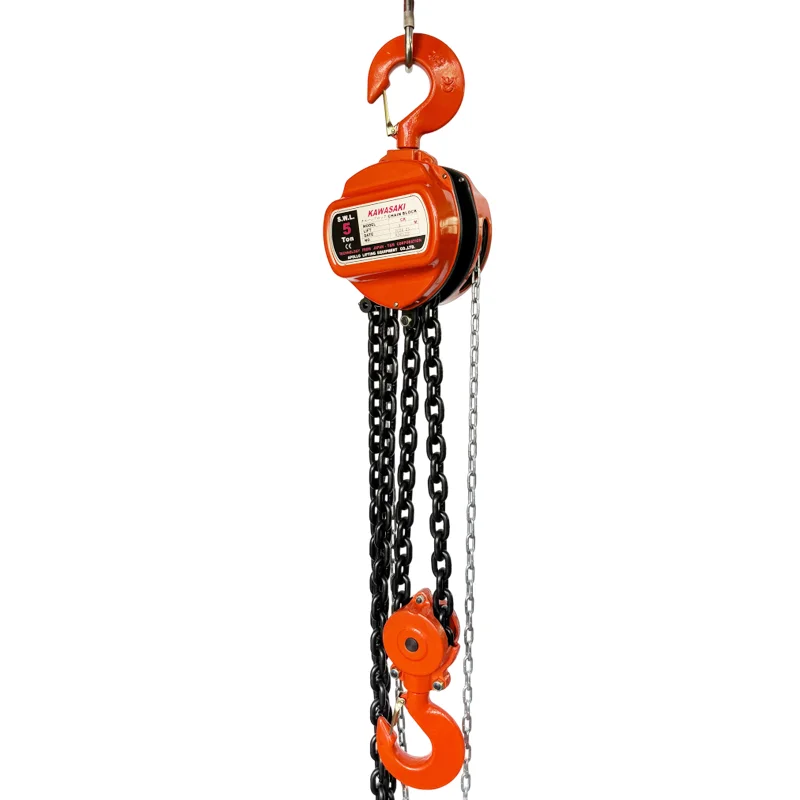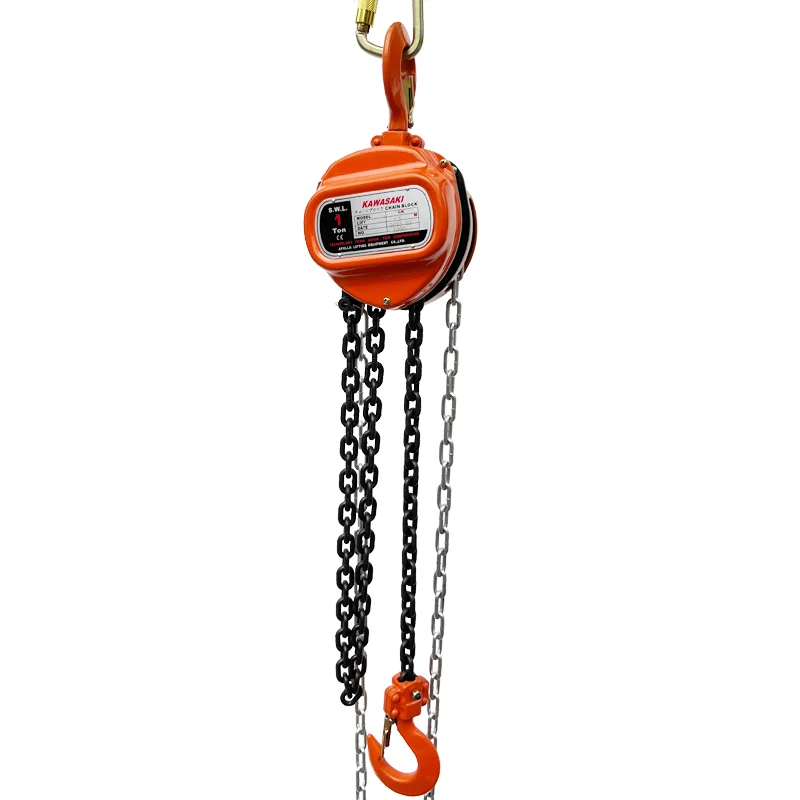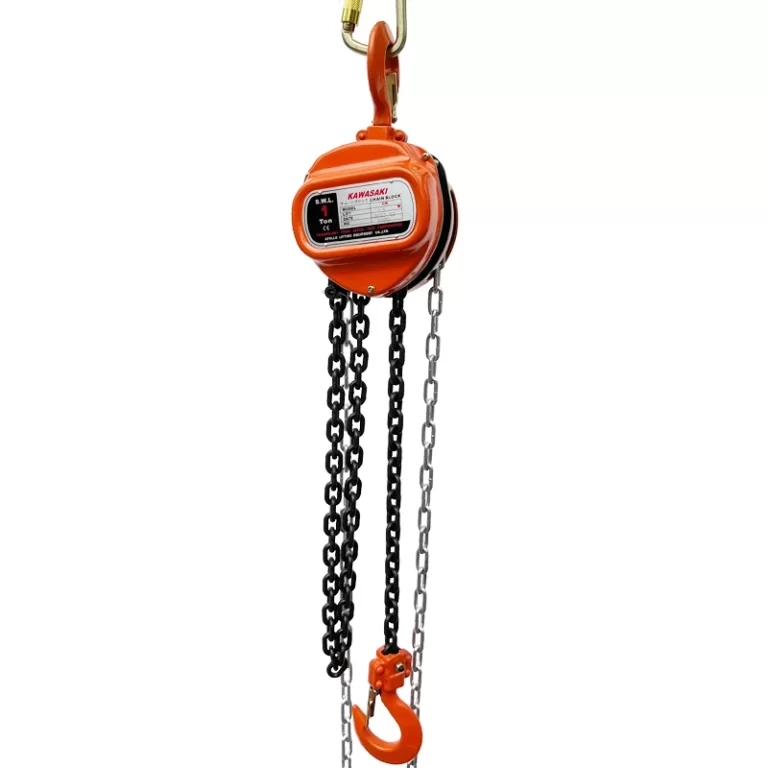A hand chain hoist is a tough, hand-powered tool for raising and lowering heavy stuff. It uses a chain and gears to get the job done. You’ll find it in places like factories, repair shops, warehouses, or even farms where there’s no electricity or it’s just not needed. If you’re new to using one, knowing how to handle a hand chain hoist safely is super important. This keeps accidents away and makes lifting jobs go smoothly.
Pre-Use Safety Checks (Pre-Operation Inspection)
Inspect Chains and Hooks
Before you start, take a good look at the load chain. Check for any wear, rust, bends, or if it’s stretched out. The hooks need to stay in their original shape and must have safety latches that work. APOLLO’s KAWASAKI chain hoists use electro-galvanized, nickel-plated, or blackened chains. These are built to resist rust and keep loads steady.
Test Mechanical Components
Give the hand chain a gentle tug. This checks if the load wheel and brake move without sticking. You want the gears to click into place smoothly, no slipping. APOLLO’s hoists have carefully crafted gears and hardened parts. They’re made to work well, even when you’re lifting heavy things often.
Verify Load Capacity and Labels
Make sure the hoist’s weight limit is equal to or higher than what you’re lifting. Don’t guess—always check. KAWASAKI hoists come with clear labels showing their load ratings and serial numbers. These follow CE/GS safety standards, so you know they’re legit.
Proper Setup and Installation
Secure Anchor Point
Hook the hoist to a solid overhead beam, gantry, or trolley system. The anchor has to be rock-solid. APOLLO offers matching monorail trolleys that make moving the hoist easier and safer for big jobs.
OSHA standards require anchor points to support at least 1.5 times the hoist’s maximum load, so a 5T hoist needs a beam rated for 7.5 tons.
Load Attachment and Balance
Double-check that the load is stable and tightly secured to the bottom hook. Line up the hoist right above the load’s center. This stops side pulling, which can wreck the hoist. APOLLO’s binding slings and lifting clamps are great tools to help keep everything lined up right.
Environmental Safety Considerations
Clear out any junk around the hoist. Make sure the floor is dry and not wobbly. Don’t use the hoist in rough spots like corrosive areas, super hot places, or dark corners unless it’s designed for that. APOLLO has options like dustproof, explosion-proof, and rust-resistant finishes for tough environments.
Safe Operating Techniques
Lifting the Load
Pull the hand chain down nice and steady. Don’t yank it or try to rush things. Hand chain hoists need careful handling, not speed. KAWASAKI hoists are built for 360° operation, so they work smoothly no matter which angle you’re pulling from.
Lowering the Load Safely
To bring the load down, pull the chain the other way, but do it slowly. Stay in control the whole time. Never walk away from a load that’s hanging in the air. That’s a big safety rule.
Avoiding Danger Zones
Nobody should stand under or near a lifted load. Put up signs or rope off the lifting area. Talk clearly with any workers nearby. Safety isn’t something you skip—it’s a must.
Routine Maintenance & Long-Term Care
Regular Lubrication and Chain Care
Put some light oil on the chain to keep rust away and make it move smoothly. For APOLLO’s electro-galvanized or Dacromet chains, oiling regularly helps them last way longer. This keeps your hoist in top shape.
Scheduled Inspections and Testing
Set up a plan to check high-use hoists every three months. APOLLO gives you OEM packages with maintenance guides and checklists tailored to each hoist model. These make it easy to stay on top of things.
Proper Storage Practices
Store your hoist in a clean, dry place. Hang it up so the chain doesn’t get tangled. APOLLO’s yellow board cartons or wooden boxes are great for protecting the hoist when you’re not using it or shipping it.
Common Mistakes Beginners Make
Overloading the Hoist
Trying to lift more than the hoist’s limit can mess up the gears and cause it to break. APOLLO adds load-limiting features to some KAWASAKI hoists to stop this from happening.
Improper Setup or Unbalanced Loads
Pulling from an angle or using a shaky anchor point messes with the force. That can lead to trouble. Always set the hoist directly above the load’s center to keep things safe.
Modifying the Equipment Yourself
Don’t try to change parts on your own. It voids the warranty and makes things risky. Stick to APOLLO-approved accessories and follow their maintenance steps. APOLLO’s hoists come with a 1-year warranty and extra help, like videos for setting it up.

Recommended Training and Best Practices
Operator Training Essentials
If you’re new, get some basic training on using hoists. APOLLO includes product catalogs and manuals with every hoist. These cover how to set it up, use it, and fix small problems.
Creating a Safety Checklist
Make a quick checklist for every day. Include these:
- Check the hoist and chain for any damage.
- Make sure the load capacity is right.
- Test the brakes to see if they work.
- Look around for any hazards in the area.
This keeps safety first every time.
Documenting Maintenance and Inspections
Write down every maintenance check and inspection. This helps you follow workplace rules and makes your hoist last longer. Keeping records shows exactly what you’ve done to take care of it.
Conclusion and Safety Summary
Hand chain hoists are super useful in tons of industries. When you use them the right way, they’re a cheap and easy way to lift heavy stuff. With brands like KAWASAKI by APOLLO, you get tough builds, custom features, and safety that meets worldwide standards.
Safety starts with being ready and ends with taking responsibility. Stick to these steps, use the right gear, and keep learning. That way, you’ll have a safer workplace for everyone.
FAQs
- Can I customize a KAWASAKI hand chain hoist from APOLLO?
A: Yes. APOLLO lets you customize with OEM/ODM options. You can pick chain types (T80, T100), surface finishes, colors, packaging, and features like load limiters or 360° operation.
- How often should I inspect a hand chain hoist?
A: Look at the hoist before every use. Do bigger checks, like testing brakes and looking for chain wear, every month or every three months, depending on how much you use it.
- Are APOLLO’s hand chain hoists good for harsh environments?
A: Yes. APOLLO has rust-proof chains, explosion-proof casings, and dust-resistant finishes. These make KAWASAKI hoists ready for tough spots.


